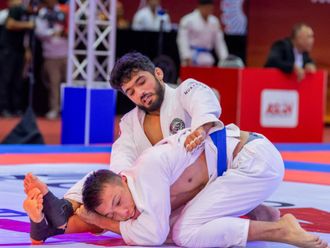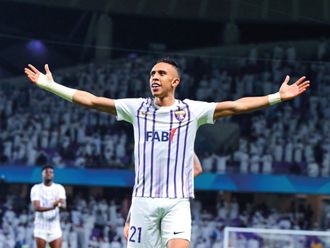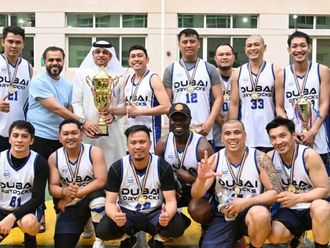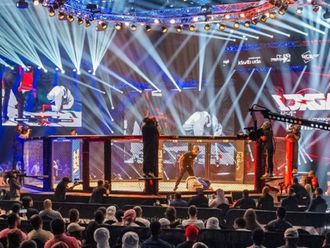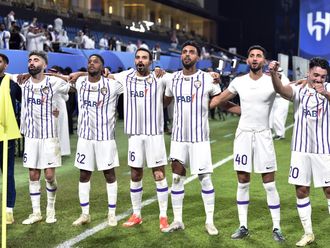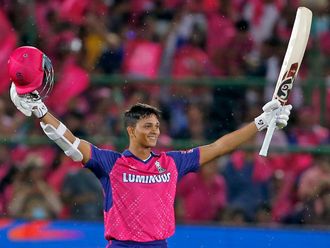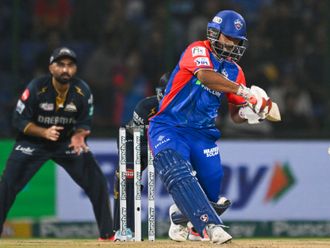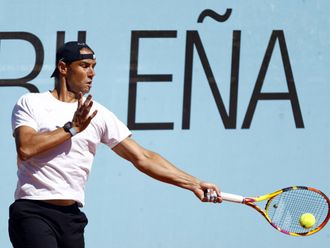Dubai: This summer — pending any appeals — the National Football League’s (NFL) $1 billion (Dh3.67 billion) settlement agreement will begin to be distributed among former players who are suffering from the long-term effects of multiple concussions.
It is expected that 6,000 of the NFL’s 20,000 retired players will develop Chronic Traumatic Encephalopathy (CTE), a disease formerly only found in ex-boxers, which is caused by repetitive head trauma.
CTE is a build-up of tau protein in the brain that causes reduced cognitive function, memory loss, aggression, confusion and depression, similar to the effects of Alzheimer’s and dementia.
The NFL had tried to deny a link between multiple concussions and CTE when it was first discovered by neuropathologists in 2002, but they were forced to accept that they should have done more to protect their players when they settled a class-action lawsuit made by 4,500 former American footballers in 2013, under pressure from US Congress.
During this case it was discovered that returning to the field of play with concussion from an earlier head knock leaves you three to six times more at risk of secondary injury, at best increasing symptoms and the risk of long-term damage, and at worst leading to death from reduced blood flow to the brain.
Why then — with the NFL scandal setting such a precedent in sport — did we see four known cases of players returning to the field with concussion in last summer’s Fifa World Cup finals in Brazil alone?
Fifa reviewed its policy after the tournament and announced that it would allow for new three-minute concussion breaks, for medics to determine whether or not an injured player could continue. The move was viewed as lip service, however, as a full concussion test takes a minimum of seven minutes, according to medical experts.
The English Premier League (EPL) also changed its protocols at the start of the 2014/15 season, forcing all players with head injuries to leave the pitch. It also gave team doctors rather than coaches the final say on whether players could continue, saw third party tunnel doctors introduced to review television replays, and added neurological assessments to a player’s annual check-up.
However, that still didn’t stop Chelsea goalkeeper Thibaut Courtois being left to play on with concussion for 14 minutes after being knocked out following a collision with Arsenal’s Alexis Sanchez in October. Fifa backed Chelsea’s handling of that situation, but Chris Nowinski, a Harvard-educated former WWE wrestler with CTE, who wrote the 2006 book-turned-documentary Head Games: The Global Concussion Crisis, told Gulf News that football still had a lot to learn from the NFL case.
Record of lapses
“The high profile of the NFL case has shown that there are significant long-term consequences to repetitive brain trauma, and historically sports programmes did a poor job following medical guidelines and protecting athletes,” said Nowinski, the executive director of the Sports Legacy Institute, an organisation that raises awareness of repetitive head injuries in sport.
“Right now,” he added, “it appears soccer is well behind the rest of the world in how they handle concussions, both at the professional level and down to their grassroots education.”
Rugby too has seen negative headlines after Wales winger George North returned to the field in the 2015 Six Nations match against England in February, only to suffer a second knockout blow, and even a third during the course of the tournament. But Nowinski has credited the sport’s response to that debacle, especially after rugby authorities announced new 10-minute concussion breaks for medics to correctly diagnose a player.
“World Rugby went from denying that CTE was a risk in rugby to changing their position and developing an impressive global concussion education campaign,” he added.
Simple solution
“In the US we led a multi-year awareness campaign, including working with the media to expose and shame the NFL, which led to Congressional hearings, and the NFL changed their policies prior to any lawsuits being filed.
“Now we are seeing those methods applied in the UK, and we are seeing rapid change in rugby, note the coverage with the North case. However, the soccer media has not been as aggressive in calling out lapses in the Fifa World Cup or the English Premier League, and it is a regular occurrence.”
The solution, Nowinski said, was simple. Medics must be given adequate time to assess whether an injured player can continue the match, perhaps with the introduction of temporary substitutions to allow for the game to carry on in a player’s absence. Under no circumstances should a player, diagnosed with concussion, return to the field of play and, if diagnosed, the player should be monitored and given adequate recovery time before returning to play their next match.
Nothing is foolproof, but Nowinski said the current rate of players being made to play on with concussion in football was unacceptable.
“There will continue to be mistakes in the medical training as policies improve, but they should be rare.
“We have a responsibility to do better with regard to concussion care, because it is one of the few injuries that can truly derail an athlete’s life, and most of the people who suffer are children,” he added.
During the course of this special report, Gulf News contacted Fifa by email to ask what they were doing to address the issue of multiple concussions.
Fifa response
In response, a spokesperson for world football’s governing body forwarded information on the introduction of three-minute concussion breaks dated September 2014. But, when asked if Fifa were considering lengthening the break to a minimum of seven minutes to be more in line with medical advice, there was no response.
Gulf News also contacted England’s Football Association (The FA), with the same enquiry. A spokesperson replied: “The FA has asked a number of leading professionals in head injury and concussion to form a new independent panel of experts to advise the organisation and football in England on this important subject.”
Their first meeting was held last month.


